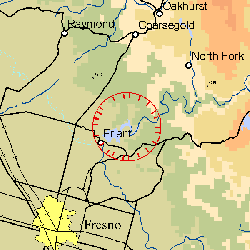 When it comes to planning flights during major holidays, the first question that many pilots often—or should—ask is, “Where will the president be?” Because of the large 30-nautical-mile-radius temporary flight restrictions that follow the president, his vacation plans can throw a major kink in many pilots’ flight plans.
When it comes to planning flights during major holidays, the first question that many pilots often—or should—ask is, “Where will the president be?” Because of the large 30-nautical-mile-radius temporary flight restrictions that follow the president, his vacation plans can throw a major kink in many pilots’ flight plans.
Although the FAA, Transportation Security Administration, and Secret Service work closer together now to develop TFRs than they did in the wake of the Sept. 11, 2001, terrorist attacks, there is still much room for improvement, according to AOPA.
AOPA President Craig Fuller recently reminded Department of Homeland Security Secretary Janet Napolitano of the association’s request last summer to participate in the planning process of TFRs, reiterating that “we can bring valuable general aviation expertise to our federal partners in this planning process.” The prompt came in anticipation of possible vacation plans by the president on the Fourth of July holiday and on the heels of a TFR that created “significant confusion” in the Chicago area during the president’s stay over Memorial Day weekend. During that weekend, the TFR changed location seven times and prompted a medevac to cancel some operations because it could not reach authorities to receive permission to fly in the restricted airspace.
“The general aviation community understands the complexities involved in security planning in today’s environment and GA operators make every effort to comply with restrictions when they have been properly informed,” Fuller wrote. “But unnecessary complexity, or inadequate information, can lead innocent and safe pilots to inadvertently violate the airspace.”
Now when the president stays in one locale for an extended period of time, gateway airports are designated to allow pilots to fly into or out of the TFR with proper screening, a discrete transponder code, flight plan, and ATC communication. In one case, the federal agencies even agreed to a small cutout over a Hawaiian airport for flight school operations to continue within a two-week TFR during the president’s Christmas vacation.
AOPA acknowledges that these enhancements are a step in the right direction, but adding input from the GA industry could greatly increase the efficiency of the airspace while still maintaining the security needed to protect the president.
“Together we can more effectively develop workable solutions and disseminate critical information to the pilot population,” Fuller concluded. “We strongly encourage you to seek stakeholder participation as you plan airspace restrictions related to future VIP movement.”


